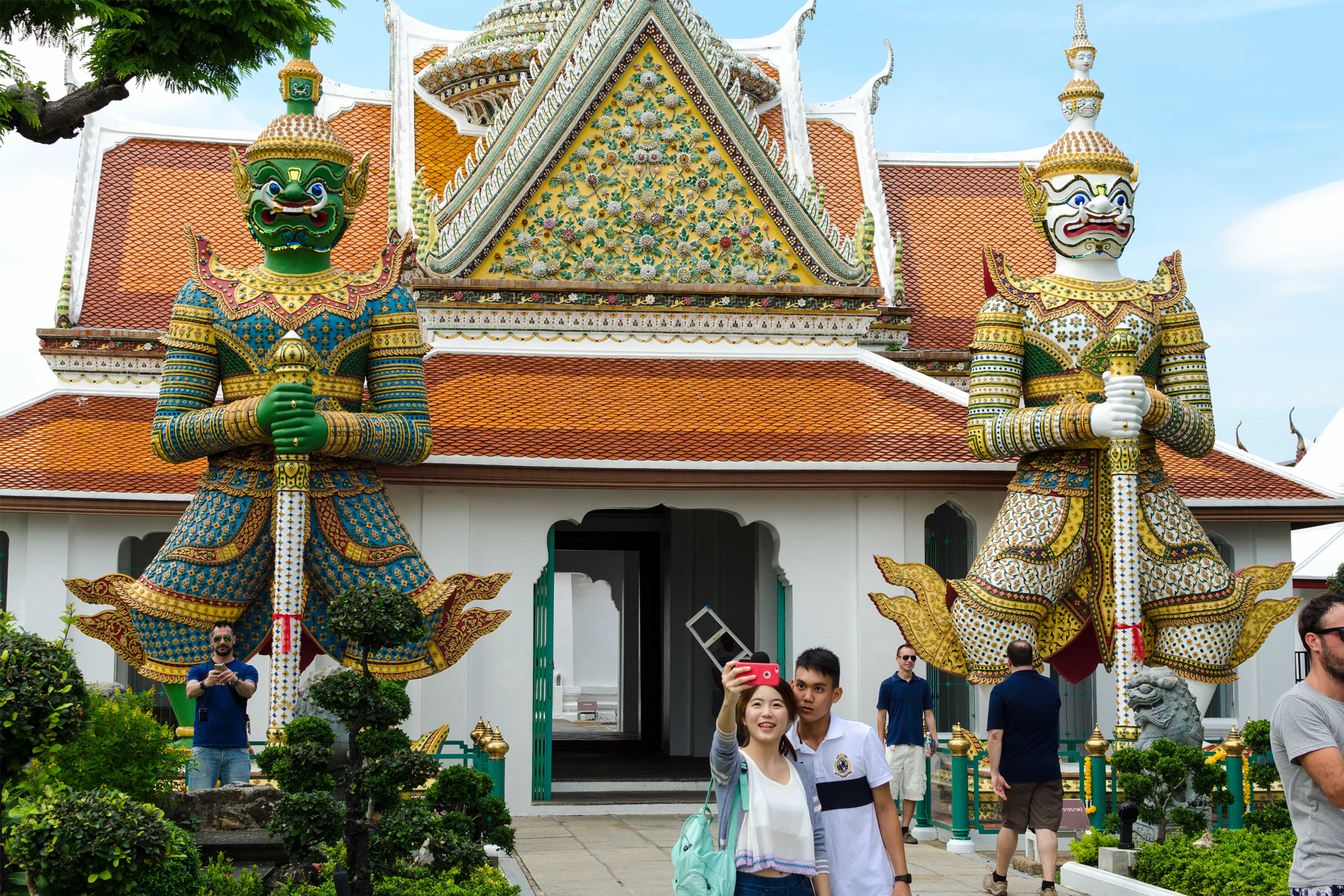
Travel
How to spend 3 days in Bangkok?
Destinations
Joanna Horanin
Hi, I'm Joanna, the author of The Blond Travels. In the worlds of Thailand and Portugal, I feel like a fish in water - and it's no coincidence! I've been exploring Thailand for over a decade, and I've settled in Portugal for 6 years now. My mission is to support Dreamers - just like you - in discovering these fascinating countries and helping those in love with them find their own place on Earth, preferably for good! Let's uncover these unique corners of the world together.
I remember my first time in Bangkok. This city immediately enchanted me – I felt like I was in a movie. In the evening, I walked out on Khao San Road and looked in awe at the illuminated neon lights, exotic smells and the crowd of people from all over the world. There was something magical about it.

Ready for an unforgettable trip in Thailand?
Buy my detailed 2-week itinerary of Bangkok, Chiang Mai and Phuket and get a complete list of must-see places, best attractions, restaurants and local tips. Save time on planning and enjoy your trip stress-free!
Click to learn more and buy your plan now!
More than 10 years have passed since that moment. Today I look at Bangkok with more distance. It’s a fascinating city, full of contrasts and energy, but I think it’s not necessary to spend too much time in it. Two or three days are completely enough to feel its atmosphere and see the highlights.

In this post, I’ll show you the best way to plan 3 days in Bangkok – what to see, where to relax, and how to squeeze the most out of your stay, whether it’s your first or next visit.
I’ve been travelling to the Thailand’s capital almost every year for the last 10 years, and each time I do something different. I choose attractions and places I haven’t seen before. Sometimes I also return to the well-trodden, touristy places. All this is to tell you the best of Bangkok, and during our consultations to advise you as best I can.
Finally, after 10 years, I can offer you a plan to explore Bangkok. You can tailor this plan according to your own tastes and what exactly interests you.
3 days in Bangkok at a glance
Day 1:
- Amulet market
- Grand Palace and Wat Phra Kaew
- Wat Pho (Reclining Buddha)
- Wat Arun
- Thon Buri canal cruise
- Dinner on a cruise on the Chao Phraya River
Day 2:
- Chatuchak market (if it’s a weekend) or floating market
- Tour of Jim Thompson’s house
- Dinner in Chinatown
Day 3:
- Green Lung tour or to Koh Kret Island
- Lunch at a local restaurant
- Massage
- Last evening at a bar overlooking the city
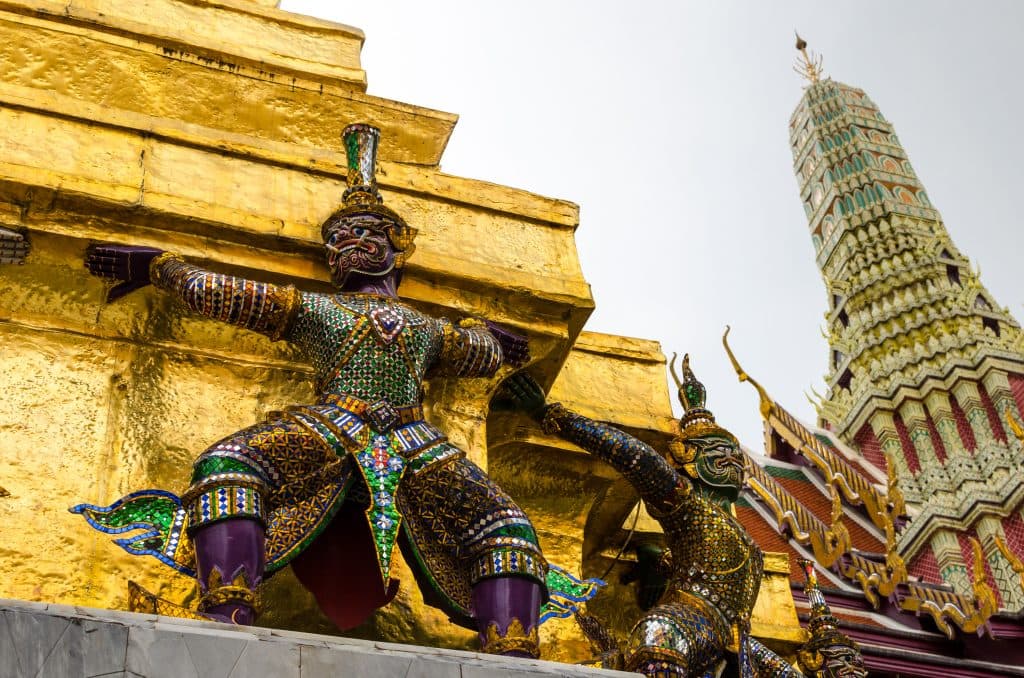
Before you go
The best time to visit Bangkok is December through March. The capital is always crowded, and it’s hotter than other parts of Thailand, but it’s still bearable during these months. From March to June, temperatures reach 40-something degrees. It is really hot then and sightseeing in the heat is not pleasant. From June to November is the rainy season. Keep in mind then that rainfall is frequent, and Bangkok for that is famous for its floods, which make it difficult to get around the city.
When you land at Bangkok airport and go through immigration, you will go straight to the baggage claim hall. Here you can choose money from an ATM and buy a SIM card.

E-Sim data package to keep you connected abroad. Use local data, wherever you are. Never pay roaming charges again.
It’s easy to add prepaid eSIM data packages anytime you want, right on your device. Find out more here.
Use code BLONDTRAVELS to save on your first purchase.
You can get from the airport to downtown Bangkok by Airport Link train – there are signs to the station at the airport. Alternatively, there are cabs. Take the escalator to the very bottom. There you will find public cabs. They cost from 200 THB to get there. There is a 50 THB surcharge for taking the highway. There is also a GRAB cab stop at the bottom. I haven’t used them myself to get from the airport to the city, but I’ve heard that the wait time is very long.
Getting around Bangkok is not difficult, but it does take some time. To get somewhere you should always expect traffic jams, and numerous transfers. There is a well-developed transportation system in Bangkok – from riverboats, subway, MRT and BTS (train system). Very often, however, you need to combine these means, and add cabs to the mix. As for the latter, the best is GRAB, Asia’s Uber. It will get you anywhere, you don’t have to haggle and the prices are also very affordable.

Since Bangkok is a very hot city, take summer and airy clothes with you. Remember, however, that you must cover your shoulders and knees to enter the temples. This applies to both men and women. Take a shirt with you, and long linen pants. A hat or cap and high sunscreen will also be a good idea. Check here for what else to take with you to Thailand.
Day 1 – Culture and temples
I always recommend that you spend your first day in Bangkok exploring the major sights and getting a feel for the city’s atmosphere. You can, of course, adapt the plan you find below to suit yourself. After a long trip and a change of time zone, you may feel tired, so choose those points of interest that interest you the most and for which you have the strength – the rest you can safely leave for another visit to the Thai capital.
Start your day early in the morning – preferably around 9:00 a.m. – and head to the amulet market near the Royal Palace. This is one of those places that gives you a deeper look into Thai culture and religiosity. Amulets have great significance in Thailand – they are believed to protect, bring luck, prosperity and even love. At the market you’ll find both cheap souvenirs and genuine, collectible specimens worth hundreds of baht. Vendors and customers often examine the details of the amulets with magnifying glasses in hand to determine their origin and value – it’s a real world for insiders, but well worth at least a glimpse.

From the market it is very close to Bangkok’s biggest attraction – the Royal Palace. The building dates back to the 18th century. The palace is divided into four main courtyards, separated by numerous walls and gates: Outer Courtyard, Middle Courtyard, Inner Courtyard and the Temple of the Emerald Buddha. It was once the seat of the King. Nowadays it is only used for special ceremonies and official delegations. The palace grounds include gardens, and temples, the most important of which is the Temple of the Emerald Buddha. Admission to the Palace costs THB 500 per person. To enter its grounds, you must have your arms and legs covered. Pants and shirts can be rented in front of the ticket office.
Pro Tip: There are scammers in front of the entrance to the Palace, who claim that it is a holiday and the place is closed. Ignore them. They try to take you on a tuk-tuk tour for a small amount of money. During this tour they will, of course, take you to various stores, where they will try to persuade you to buy souvenirs. Enter the Palace grounds and don’t mind what they say.
After visiting the Palace, head to Wat Pho – the Temple of the Reclining Buddha. It is one of the oldest temples in Bangkok. It was built before King Rama I declared Bangkok the capital. The entire complex covers 80,000 square meters and houses more than 1,000 Buddha statues. The most popular, of course, is the Lying Buddha, a statue that measures 40 meters in length and 3 meters in height and shows the Buddha’s moment of reaching Nirvana. Admission to the Wat Pho complex costs THB 100 per person.

Not tired of sightseeing yet? Great. Walk up to the Tha Chang boat landing and take a boat to the other side of the river and visit Wat Arun. This is the symbol of Bangkok, a beautiful temple standing on the shore. The stupa was built with ceramic tiles and measures between 66.8 and 86 meters – exact measurements are unknown. Next to the stupa is the hall of ordination, which was designed by Rama II. The front entrance to the Hall of Ordination has a roof with a central spire, decorated with colorful ceramics and stucco covered with colorful porcelain. Inside is a grand altar with decoration in red, gray and white marble.
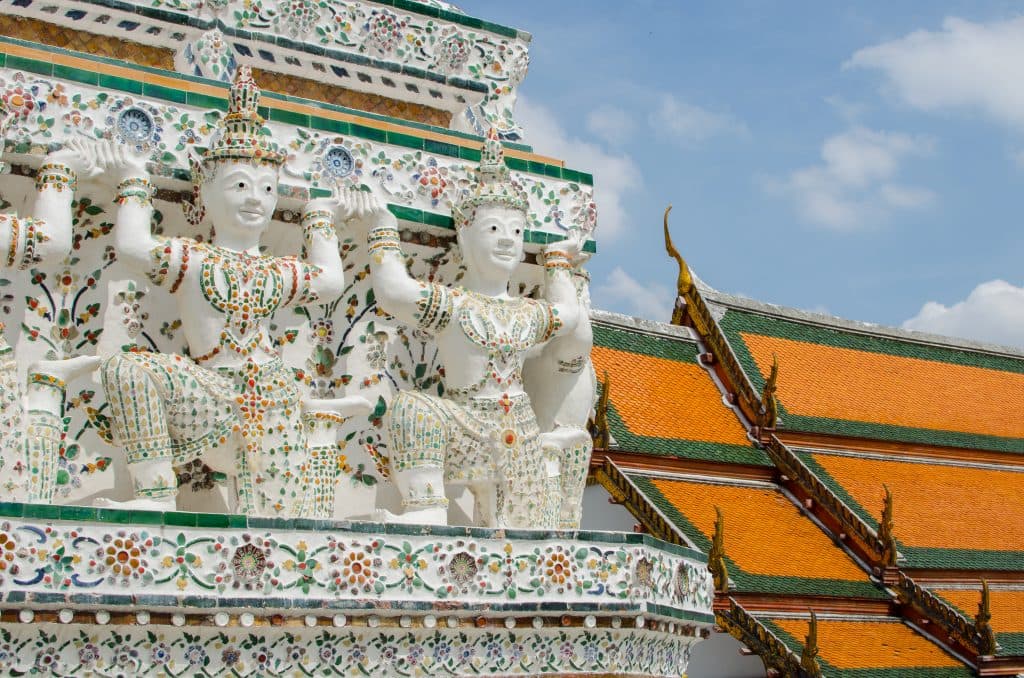
From Wat Arun, you can board a boat and take a cruise along the quiet canals of the Thon Buri district. It’s a particularly pleasant excursion that allows you to see a more authentic face of Bangkok – away from the hustle and bustle and crowds. Thon Buri was once the capital of Thailand, and today is a place where time passes more slowly. Here you can still see traditional wooden houses on stilts, picturesque terraces overlooking the water and locals busy with their daily routines – someone watering plants, someone else feeding fish or just relaxing in the shade. It’s a great way to slow down for a while and feel the atmosphere of old Bangkok.
In the evening, take a cruise on the Chao Phraya River. You will find many offers for such cruises in Bangkok. I recommend a tour with dinner and champagne. Along the way you will see the beautifully lit city and relax after a busy day.
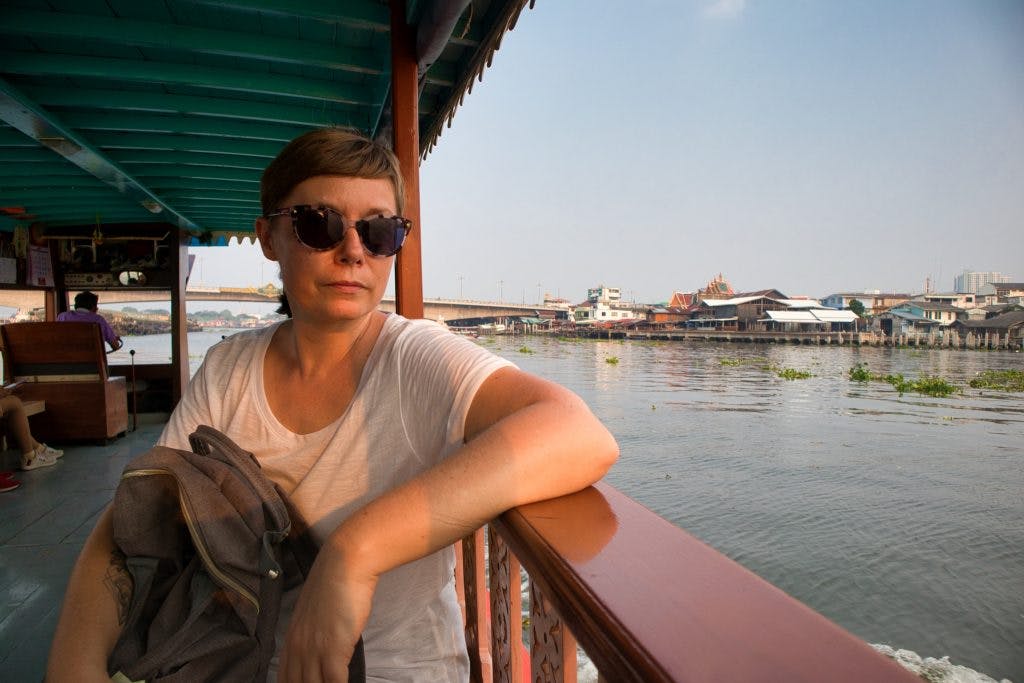
Day 3 – Markets, Street food and modern Bangkok
I suggest starting the day at one of the many markets. If you are in Bangkok during the weekend, Chatuchak will be a super choice. It is a huge market where you can find literally everything. You can spend hours here, wandering through the small streets. In the stores here you will find clothes, accessories, paintings, food, drink, souvenirs, and you can even buy a dog or a cat!
If you’re spending time in Bangkok outside of the weekend, a floating market may also be something you’re interested in. Floating markets are water markets where vendors and customers travel by boat. I recommend you take a trip to one such market from GetYourGuide. Squeeze even more out of your day and also go to the Railway Market, a market with a train passing through the middle. Check out this half-day guided tour.

Ready for an unforgettable trip to Thailand?
Buy my detailed 2-week itinerary of Bangkok, Chiang Mai and Krabi and get a complete list of must-see places, best attractions, restaurants and local tips. Save time on planning and enjoy your trip stress-free!
Click to learn more and buy your plan now!
An alternative to these tours can be a visit to Talad Noi. This is a Chinese neighborhood that was the first neighborhood built in Bangkok. This is where the Portuguese settled before Bangkok became a district of Thailand. I did a half-day tour of Talad Noi, Chinatown and Thonburi with Follow Me Bike Tours and can wholeheartedly recommend it. You will definitely see places in the city that not all tourists see and learn a lot about Thai culture.

Spend the second half of the day visiting the home of Jim Thompson. He was an English entrepreneur who settled in Bangkok. He was mainly involved in producing beautiful materials and collecting artwork. Today you can visit his house, which stands above one of the canals. It is a beautiful and very interesting place. The house is visited with a guide. Admission costs 200 THB.

Have lunch at Krua Pa & Ma Restaurant. There you will find good local food at a very good price.
In the evening head to Chinatown for a real feast. Before sunset, you can still stop by Talad Noi. Walk down to the river and see the setting sun reflected in the buildings on the other side of the Chao Phraya.
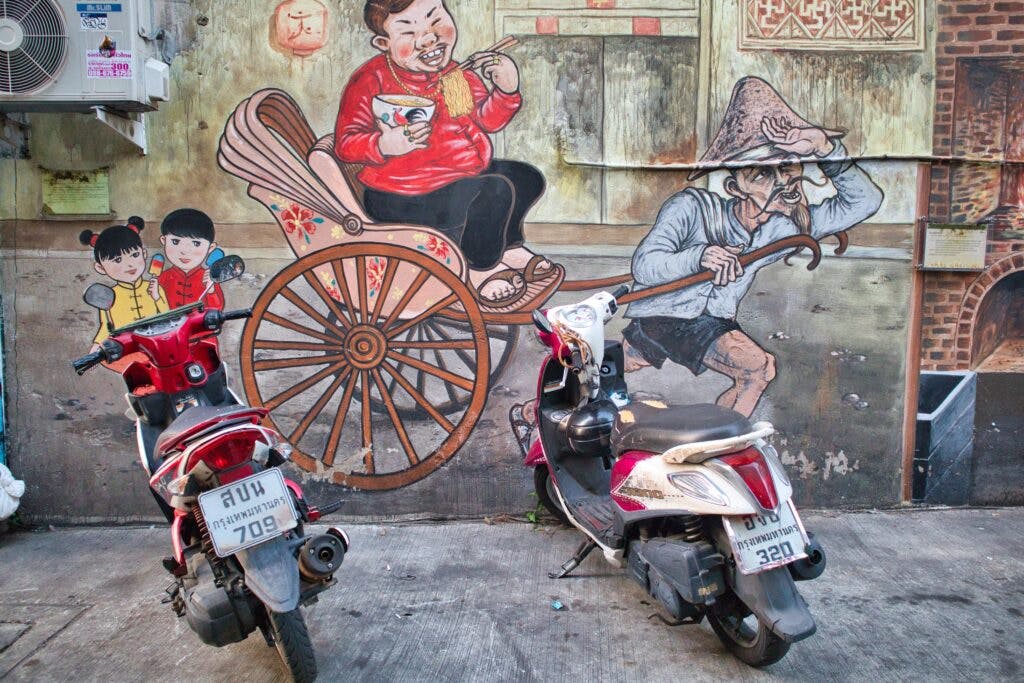
I hope you’re hungry, because you’ll find many stalls with delicious food in Chinatown. Try a little bit of everything, and don’t be afraid to look into the smaller streets, where stores and restaurants are also hidden. Here is my account of my Chinatown tour, which I highly recommend.
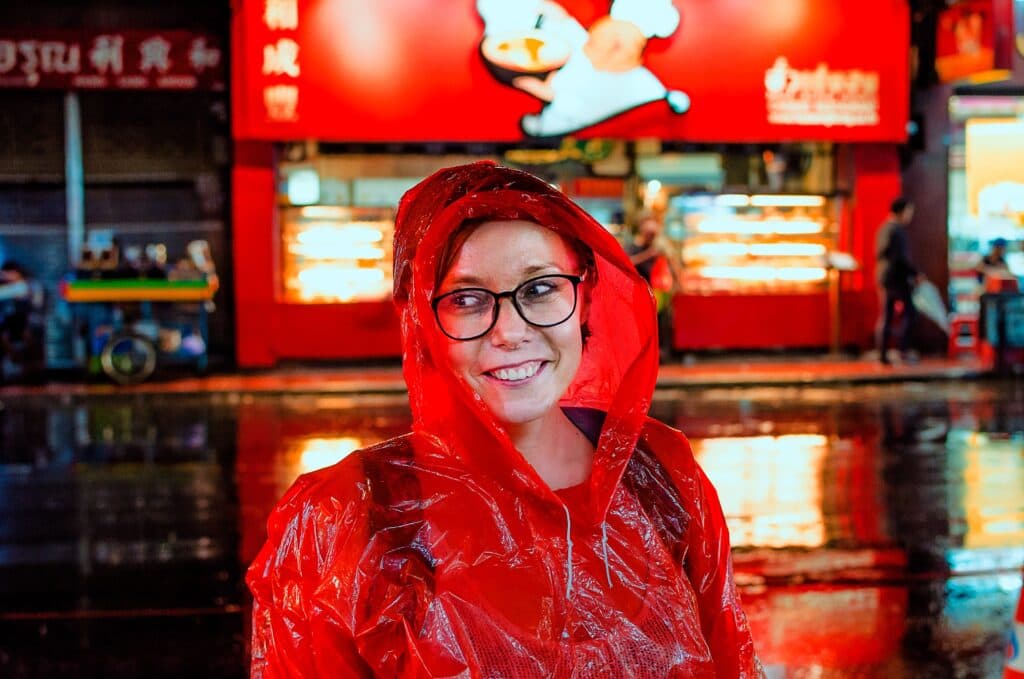
Another option for the evening is the Asiatique shopping center. The center itself is very modern and extremely interesting. In addition, you can take a ride on the Ferris wheel and see the river and the surrounding area from above.
Day 3 – Local vibes and relax
For this day, I have two suggestions for you to choose from.
The first is a trip to Koh Kret. It is an island in Bangkok. The locals are specialists in ceramics. You can buy beautiful wares here at the weekend market. During the week it is also worth coming here. The island is green, peaceful and you can walk around it or rent a bicycle and ride along the winding paths. On the island you’ll find restaurants and a kraft beer bar that is famous throughout Bangkok.
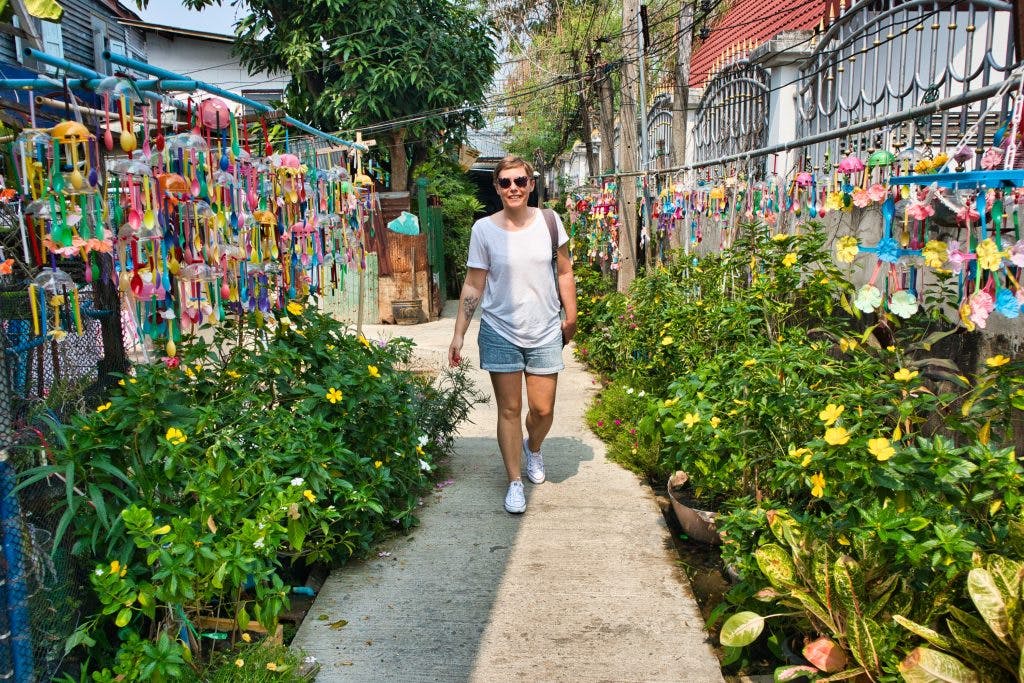
The second option is the Green Lungs of Bangkok – a region that from a bird’s eye view actually looks like lungs. In addition, it is covered with lush vegetation and a park with large trees and a pond. Residents of Green Lungs live by the canals, in huts on stilts. Green Lungs is reached by boat. At the marina you can rent a bicycle right away and this is the best means of transportation around the area.

You can have lunch at one of these places or go to Isaan Ekkamai. This small restaurant serves dishes from the Isaan region – from the east of Thailand. I recommend the grilled chicken, fish, sticky rice and papaya salad.
It’s time to try something very Thai, which means going for a massage. I often go to Tony Thai Massage. It is a very local place with friendly staff. The treatments are at good prices. However, don’t expect anything very relaxing. Thai massage can be a bit painful. That’s why it’s a good idea to tell the masseuse or masseuse how strong you want the treatment to be.
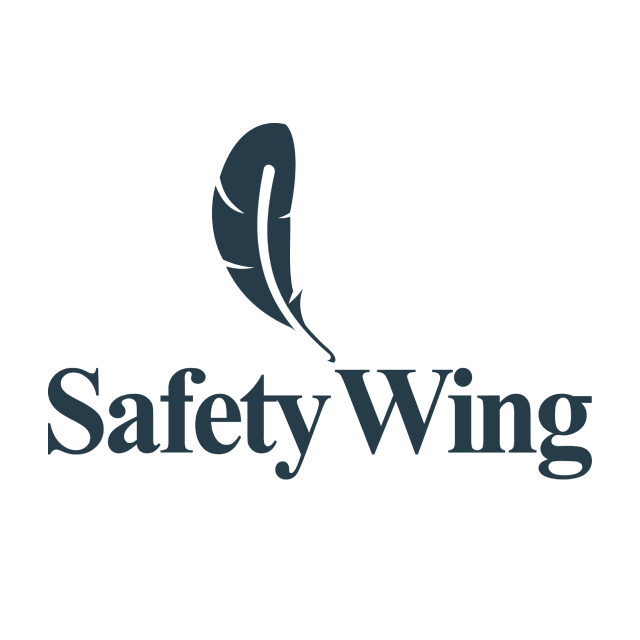
Travel and travel medical insurance for nomdas and long-term travellers. Buy it anywhere, everywhere and enjoy a peace of mind.
At the end of your stay in Bangkok, you should enjoy one of the many rooftops. I recommend you Octave Rooftop, whose bar is located on the 50th floor. The view from there is amazing.
Where to stay in Bangkok?
In Bangkok you will find hotels for every budget. If you’re looking for something cheap, the Khao San area is sure to be the best. Check out Bed Station Khao San. Slightly more expensive is the Chillax, which I can recommend because I’ve stayed there a couple of times.
I also really like Tribe Living Bangkok. It is my favorite hotel. It has great service and super breakfasts.
You can read more about where to stay in Bangkok here.
Bangkok is a city that overwhelms some and delights others – but leaves no one indifferent. Three days are enough to see its most important facets: spiritual, local and modern. Whether it’s your first visit or your next, Thailand’s capital always has something new to offer.
I wish you an amazing trip and hope that Bangkok will leave as many impressions in your memory as it did with me!
Planning Your Thailand Trip?
You have two options:
Option 1: DIY with my Ready-Made Guide (40 PLN/€9)
Get my complete 2-week Thailand itinerary covering Bangkok, Chiang Mai, and the islands. Includes day-by-day plans, restaurant recommendations, and insider tips. Buy Ready-Made Guide
Option 2: Custom Travel Plan (300-600 PLN/€70-140) I’ll create a personalized itinerary based on: – Your travel dates and pace – Your budget and interests – Special requests (accessibility, dietary needs, etc) Includes video consultation + detailed PDF plan. Request Custom Plan →